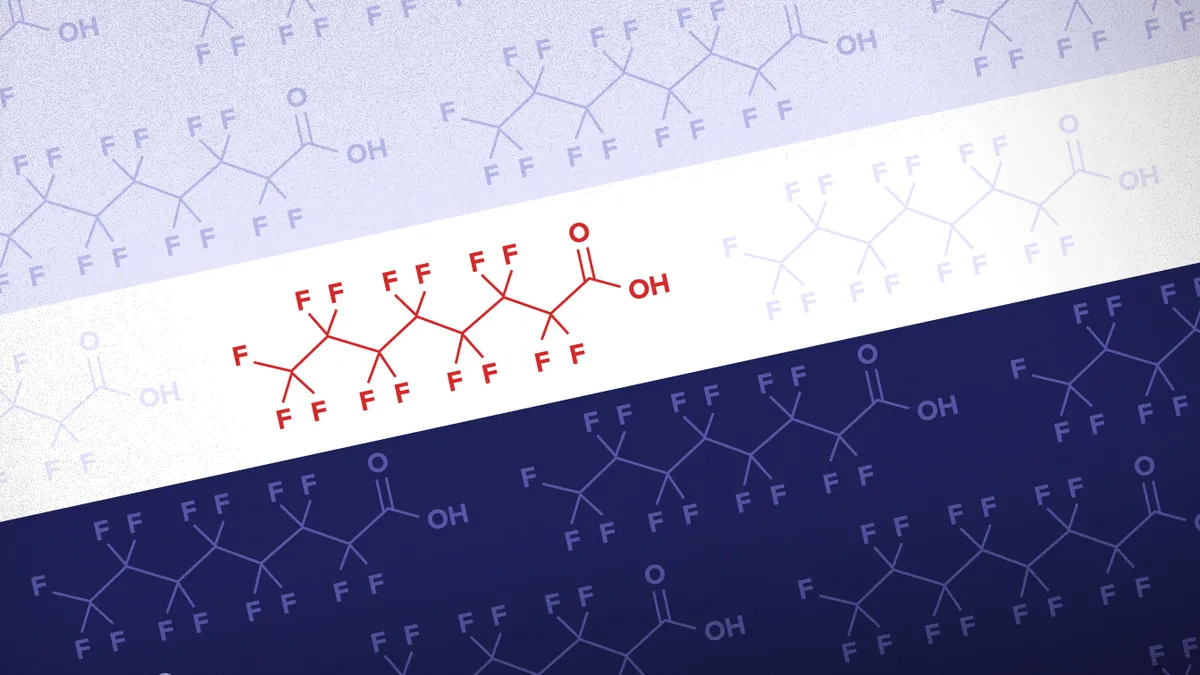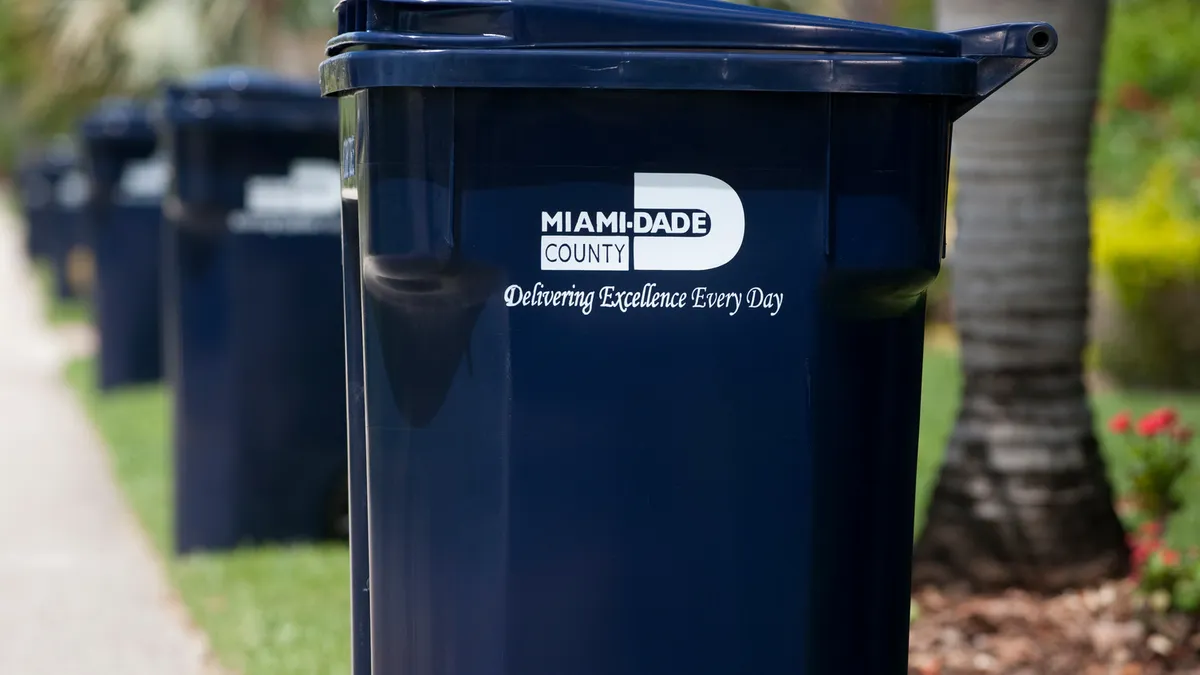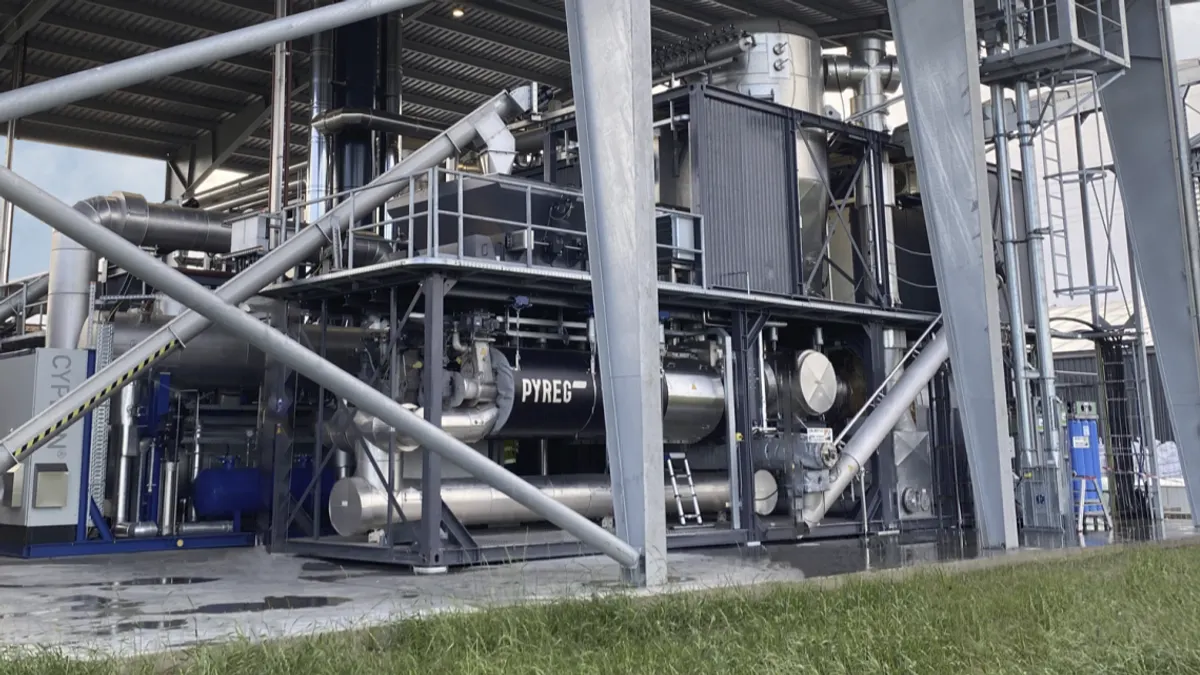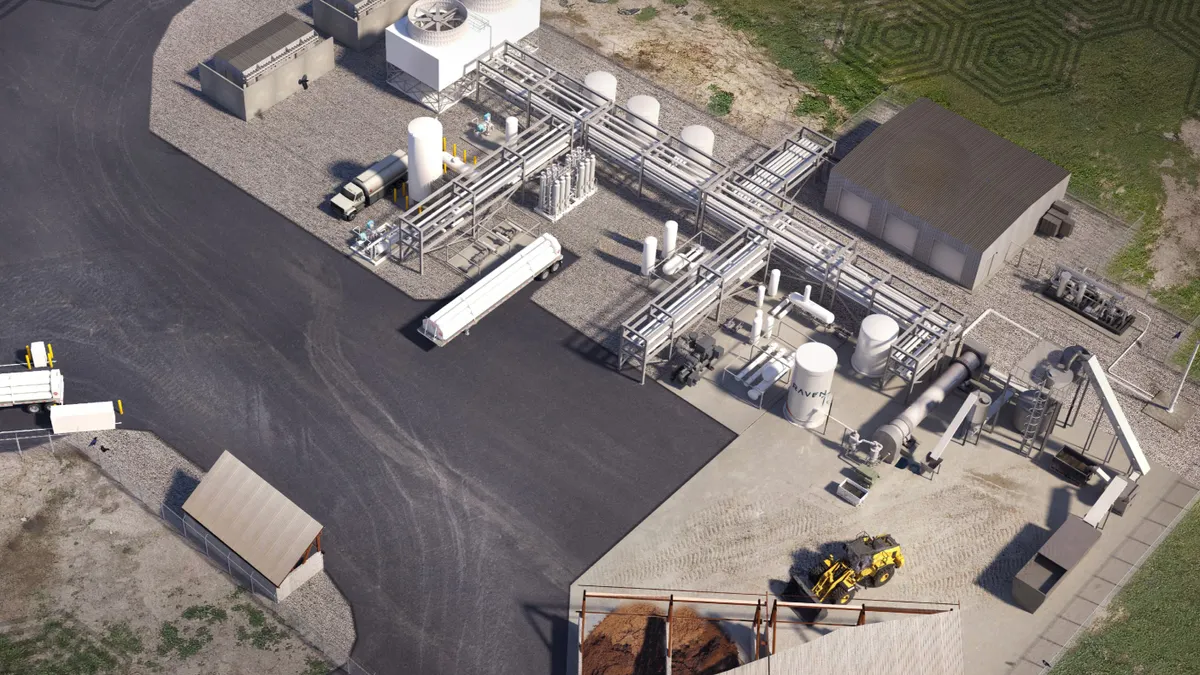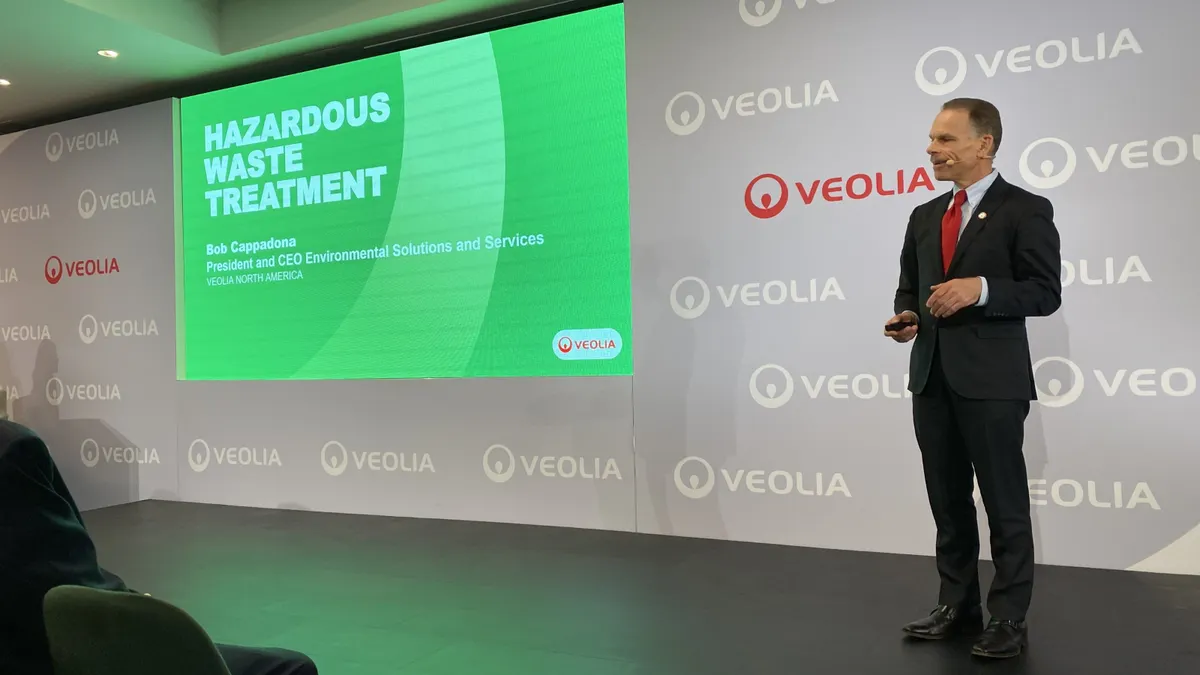A planned New Jersey study on how certain chemicals behave when incinerated has been scrapped following outcry from local community members. The study, focused on per- and polyfluoroalkyl substances (PFAS), was set to take place this month in Rahway at the Union County Resource Recovery Facility operated by Covanta and would not have involved the actual incineration of PFAS.
The company had agreed to the test in collaboration with the U.S. EPA and New Jersey Department of Environmental Protection (DEP) as part of an effort to learn more about PFAS in the waste stream. But local groups were alerted about the test by Judith Enck, a former administrator for EPA's Region 2 under the Obama administration. Enck said she had concerns about the plan, which would have seen the test take place near low-income, largely Black residents.
"Burning PFAS chemicals at municipal incinerators does not make sense," she said. "[EPA] should be rapidly investigating non-incineration disposal technologies that will not put the public health or the environment at risk."
Nicolle Robles, a spokesperson for Covanta, said the company was approached by EPA to partner on the study but the facility owner, Union County Utilities Authority, had not authorized it to go forward.
"We will look closely at any future opportunity to help study this important topic," Robles said, emphasizing the need for more research around PFAS disposal.
Local reactions seemingly compounded the issues facing the study. Quanae Palmer-Chambliss, head of the local NAACP chapter, said she had recently learned about PFAS and was concerned about potential impacts to her community.
"These plants are set up in marginalized communities. They have been fined before for releasing toxins in the community that are above EPA standards," she said.
The controversy comes at a time of increasing national scrutiny around PFAS, as well as environmental justice issues. The virtually indestructible nature of PFAS — a family of more than 4,500 chemicals — has led to growing interest in combusting them, even as concerns have emerged surrounding potential health and environmental impacts. Several PFAS have been credibly linked to cancer and other health issues by EPA, and best practices around disposal remain an open debate. Landfills pose an issue due to the presence of PFAS in leachate, which has prompted interest in incineration.
As part of an effort to understand how PFAS behave when incinerated, EPA sought to burn two non-toxic gasses at the Rahway incinerator this month to see if the facility could break down the chemicals. DEP officials said no actual PFAS would be burned during the test, which would instead use two surrogate compounds, carbon tetrafluoride (CF4) and hexafluoroethane (C2F6), due to their similar structures. Those officials said the test would have been a safe one, conducted over a few days with Covanta operating the facility as usual and the government also studying how much PFAS is emitted from the burning of traditional MSW.
During a press call on Tuesday, DEP Deputy Commissioner and Chief of Staff Shawn LaTourette said the state ultimately asked EPA to move the test outside of New Jersey due to reactions from community members. New Jersey is considering an environmental justice bill supported by the governor and issues impacting those communities have been in the spotlight recently.
"EPA did not have the requisite amount of community engagement prior to putting this forward," LaTourette said, emphasizing the state did not request a complete end to the study. As all of Covanta's facilities in New Jersey are in environmental justice communities, however, LaTourette said the state asked that tests be shifted elsewhere.
EPA confirmed the decision through a statement from Administrator Andrew Wheeler stating Enck had "single-handedly shut down the Rahway study setting back the agency’s research efforts on PFAS." Wheeler called Enck's comments "meritless" and said the study's cancelation was "to the detriment of science."
LaTourette declined to comment on Enck's role in the process, but said "misperceptions" around the test had sowed "mistrust and misunderstanding of the facts" at the expense of critical research.
"The science could help environmental justice communities, period," he said. "It could help all communities."
Both Enck and Palmer-Chambliss said DEP and EPA had largely tasked Covanta with conveying information to community members, rather than playing an active role in conversations. Robles of Covanta said the company had engaged community members on the issue.
"On community outreach, assertions that Covanta did not notify the local community are not true," Robles said. "We notified local leaders and presented the idea of the study on a call with community members."
DEP Associate Commissioner for Science and Policy Katrina Angarone said EPA told the state a meeting had taken place with a community group Covanta engages with regularly, but acknowledged that limited conversation may not have been enough, a point opponents of the test underscored.
"If [EPA] wants to attempt to do this at another incinerator, they should tell the public where and not rely on Covanta to inform the community," Enck said.
Opponents also linked the situation to a separate incident earlier this year in Cohoes, New York. Bennington College Professor David Bond and his students tested soil and surface water near that area's plant, run by Norlite Corp., which previously accepted aqueous film-forming foam (AFFF). The researchers found traces of PFAS in their samples, leading to concerns that the incineration of AFFF might be spreading the chemicals through the air and toward a nearby public housing complex. Their findings, released at the end of April, led to the cancelation of the facility's contracts with the U.S. Department of Defense, as well as to legislation prohibiting the incineration of AFFF in the state that is awaiting Gov. Andrew Cuomo's signature.
LaTourette strongly rejected comparisons between the two incidents, stating no AFFF would have been burned during the proposed test. He indicated hope that EPA will continue studying PFAS in the waste stream.
The agency said that is now a priority. On the same day it confirmed cancelation of the Rahway test, EPA rolled out a separate partnership between federal and states agencies "seeking detailed plans for a non-thermal technologies to destroy PFAS, without generating hazardous byproducts" chiefly in AFFF waste. During a Tuesday roundtable in North Carolina, EPA said it is launching a technical challenge to meet that goal and will offer up to $50,000 for best concepts with the potential for field testing in partnership with the agency.
This story has been updated to include comments from Covanta.

